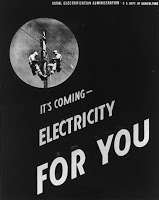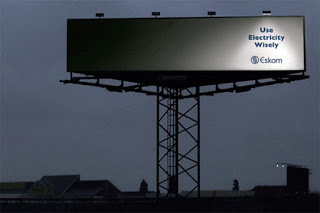Renewables Make Middling Headway in 2016
 The EIA Electric Power Monthly report came out Friday. Being an energy nut, I read this report each month the day it appears, but the report in February is special because it has December year-to-date data, closing out the year. As I perused the monthly reports over the course of 2016, I noted renewable capacity increased only in dribs and drabs, causing me to doubt that the US would even reach 2015’s renewable capacity additions. Lo and behold a prodigious amount of solar panels and wind turbines were brought on-line in December. Indeed, 56% of all 2016’s wind turbines came on-line that cold, dark month, as did 36% of all utility-scale solar arrays for the year. Those installers must’ve been working around the clock. In any event, 2016 solar and wind capacity additions squeaked by 2015 numbers, but not by much. Utility scale solar installations were 8% higher than in 2015, and wind installations were only 2% higher. In 2015 China’s solar and wind capacity installations were double and triple ours, respectively. I expect we’ll find that in 2016 they outpaced us even further.
The EIA Electric Power Monthly report came out Friday. Being an energy nut, I read this report each month the day it appears, but the report in February is special because it has December year-to-date data, closing out the year. As I perused the monthly reports over the course of 2016, I noted renewable capacity increased only in dribs and drabs, causing me to doubt that the US would even reach 2015’s renewable capacity additions. Lo and behold a prodigious amount of solar panels and wind turbines were brought on-line in December. Indeed, 56% of all 2016’s wind turbines came on-line that cold, dark month, as did 36% of all utility-scale solar arrays for the year. Those installers must’ve been working around the clock. In any event, 2016 solar and wind capacity additions squeaked by 2015 numbers, but not by much. Utility scale solar installations were 8% higher than in 2015, and wind installations were only 2% higher. In 2015 China’s solar and wind capacity installations were double and triple ours, respectively. I expect we’ll find that in 2016 they outpaced us even further.  The good news is that there were significant renewable capacity additions in states that have largely been renewable sluggards up until now. Ohio, Nebraska, Missouri, and even West Virginia put in wind farms. Both Georgia and Florida installed significant amounts of utility scale solar. Even South Carolina and Mississippi installed a tiny bit of solar to start taking advantage of their prodigious sunshine.
The good news is that there were significant renewable capacity additions in states that have largely been renewable sluggards up until now. Ohio, Nebraska, Missouri, and even West Virginia put in wind farms. Both Georgia and Florida installed significant amounts of utility scale solar. Even South Carolina and Mississippi installed a tiny bit of solar to start taking advantage of their prodigious sunshine. Let’s move on to the states that are the big guns for renewables.
Total Utility-Scale Non-Hydro Renewables (Gigawatt-hrs) 2016 2015 1 Texas 60037 Texas 46674 2 California 51263 California 45395 3 Iowa 20305 Iowa 18131 4 Oklahoma 19844 Oklahoma 14369 5 Kansas 14187 Minnesota 11588 6 Minnesota 12464 Illinois 11323 7 Illinois 11259 Kansas 11062 8 Colorado 10063 Washington 9067
As you can see above, though California and Texas have been duking it out for top dog status, the four states in the lead on renewable energy have maintained their race order between 2015 and 2016. However, there have been some surprising changes in the other states. Oklahoma really poured on the steam and is now giving Iowa a run for its money for 3rd place. Kansas leap frogged over Illinois and Minnesota in impressive fashion to take 5th place. And Colorado pushed poor Washington right off the chart!
 Before we crown Texas as Renewables King, let’s remember we haven’t included distributed solar, the kind homes and businesses have on their rooftops. In this area California is not only king, it’s King Kong. At 8402 gigawatt-hrs in 2016, no other state comes close. In 2015, adding in distributed solar gave California the edge over Texas. However, in 2016 when we add in distributed solar, though California comes valiantly close, it still doesn’t quite reach Texas’s total. Texas retains its Total Renewable Electricity Generated crown.
Before we crown Texas as Renewables King, let’s remember we haven’t included distributed solar, the kind homes and businesses have on their rooftops. In this area California is not only king, it’s King Kong. At 8402 gigawatt-hrs in 2016, no other state comes close. In 2015, adding in distributed solar gave California the edge over Texas. However, in 2016 when we add in distributed solar, though California comes valiantly close, it still doesn’t quite reach Texas’s total. Texas retains its Total Renewable Electricity Generated crown.Next let’s look at renewables as a percentage of electric sales, the best measure we have of electricity consumed in a state. We now see a different set of states come to fore.
Utility-Scale Renewables as a Percent of Electricity Sales 2016 2015 1 North Dakota 45.0% Iowa 38.8% 2 Iowa 42.5% North Dakota 37.2% 3 Maine 38.9% Maine 37.2% 4 Kansas 35.6% Kansas 27.7% 5 Oklahoma 32.8% Oklahoma 24.0% 6 Wyoming 26.4% Wyoming 22.3% 7 South Dakota 26.0% South Dakota 20.7% 8 California 20.0% New Hampshire 18.8%
Though Iowa was no slouch in 2016, North Dakota blew past it with ease. In fact, being a state with a small population and a prodigious amount of wind, it could probably achieve 100% renewables with a snap of its fingers and have excess renewable electricity to export. The real news is that Kansas and Oklahoma are on Maine’s tail, looking to overtake it if Maine doesn’t watch out. And California showed its mettle by getting itself on the chart at all, not an easy feat with such a large population, pushing New Hampshire down a notch. More good news: in addition to the states above, another eight achieved above 15% renewables as a percent of sales in 2016, including Minnesota, New Mexico, Vermont, Texas, Colorado, Montana, Nevada and Oregon. That makes 16 states above 15% renewables, whereas in 2015 there were only 11. Nearly a third of the population of the United States lives in these 16 states. This means nearly a third of the country is seeing the economic and environmental benefits of renewable energy and has no reason to turn back the tide on renewable power.

For the United States as a whole, renewables (utility scale + distributed solar) made up 8.3% of sales in 2015 and 9.7% in 2016. Looking at total electricity generated in the US (approximately 9% is lost in the transmission process) renewables made up 8.9% in 2016, up from 7.6% in 2015. This is a significant increase, but not nearly as fast as the planet needs.
Now for some darker news. Coal. Ever wonder which states burn the most? Unfortunately Texas is king in this category, too, and shows no sign of slacking.
Electricity produced by Coal (Gigawatt-hrs) 2016 2015 1 Texas 121231 Texas 121554 2 Indiana 72582 Indiana 78213 3 West Virginia 71412 Illinois 73744 4 Ohio 68944 Kentucky 72620 5 Kentucky 66889 Ohio 71710 6 Missouri 60580 West Virginia 68056 7 Illinois 59315 Missouri 65326 8 Pennsylvania 54453 Pennsylvania 64637
 Seven of the eight states dropped their coal burning in 2016, Texas not by much, Illinois by a huge amount. West Virginia was the odd one out, actually increasing its coal burning. West Virginia generates twice as much electricity as it uses, almost all of it with coal, exporting the excess to nearby states and the District of Columbia. Its attempt to fight the trend is pretty clearly a losing battle, however. Total US coal use dropped by another 8.5% in 2016, for a total of 40% over the last ten years. In December coal-burning power plants were shuttered Florida, Colorado and Indiana, which means totals for 2017 are guaranteed to be lower yet. Moreover, in 2017 large coal-burning plants are scheduled to shut in Kentucky, Virginia, North Dakota, Massachusetts, Nevada, New Mexico, Tennessee, and even, yes, West Virginia, while no new coal plants are scheduled to come on line in the entire country. No matter what any politician promises, coal-producing and coal-burning states would be wise to read the writing on the wall.
Seven of the eight states dropped their coal burning in 2016, Texas not by much, Illinois by a huge amount. West Virginia was the odd one out, actually increasing its coal burning. West Virginia generates twice as much electricity as it uses, almost all of it with coal, exporting the excess to nearby states and the District of Columbia. Its attempt to fight the trend is pretty clearly a losing battle, however. Total US coal use dropped by another 8.5% in 2016, for a total of 40% over the last ten years. In December coal-burning power plants were shuttered Florida, Colorado and Indiana, which means totals for 2017 are guaranteed to be lower yet. Moreover, in 2017 large coal-burning plants are scheduled to shut in Kentucky, Virginia, North Dakota, Massachusetts, Nevada, New Mexico, Tennessee, and even, yes, West Virginia, while no new coal plants are scheduled to come on line in the entire country. No matter what any politician promises, coal-producing and coal-burning states would be wise to read the writing on the wall. For more on US and state energy consumption, check out An Energy Diet for a Healthy Planet.
Published on February 27, 2017 13:36
No comments have been added yet.



